Equine musculoskeletal examinations and treatment
Lameness, stiffness and lowered performance
Changes, even minute ones, in a horse’s movement, performance or behavior may be indicators of a disorder of the musculoskeletal system. Obvious lameness is one of the most common reasons for a veterinary examination. Other reasons include stiffness, lowered performance or unwillingness to move around. We are also more than happy to examine a horse’s musculoskeletal system even if there are no obvious symptoms, for example, before or after a competition season.
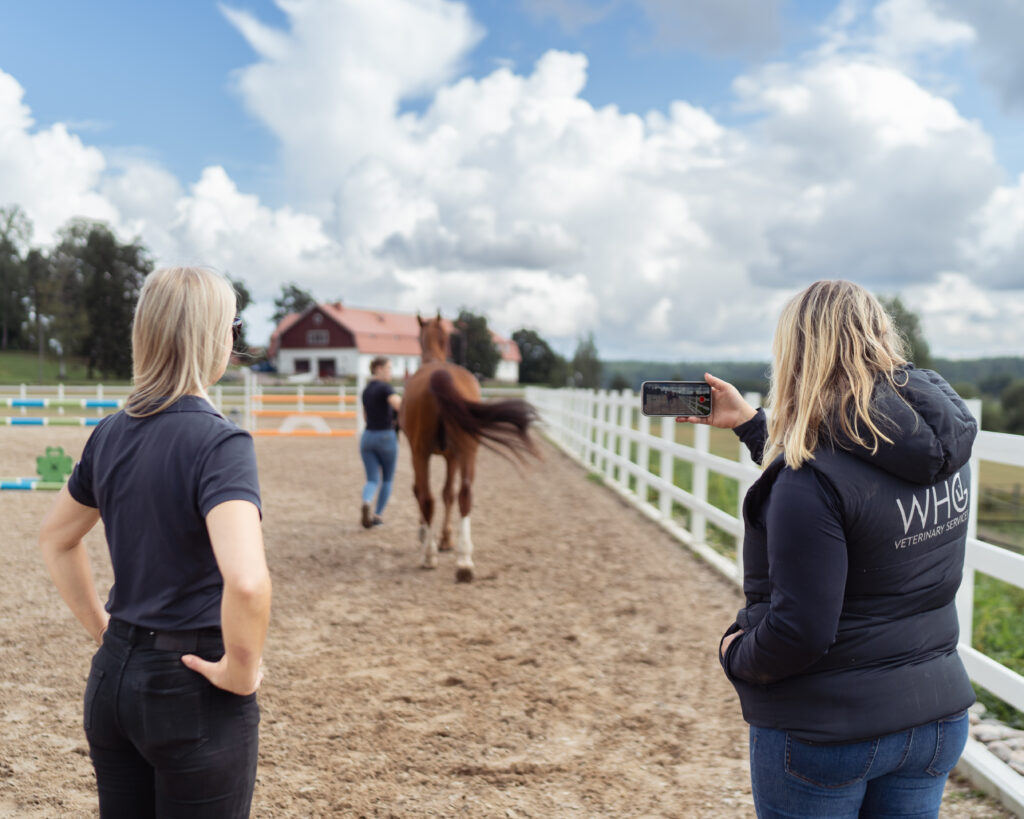
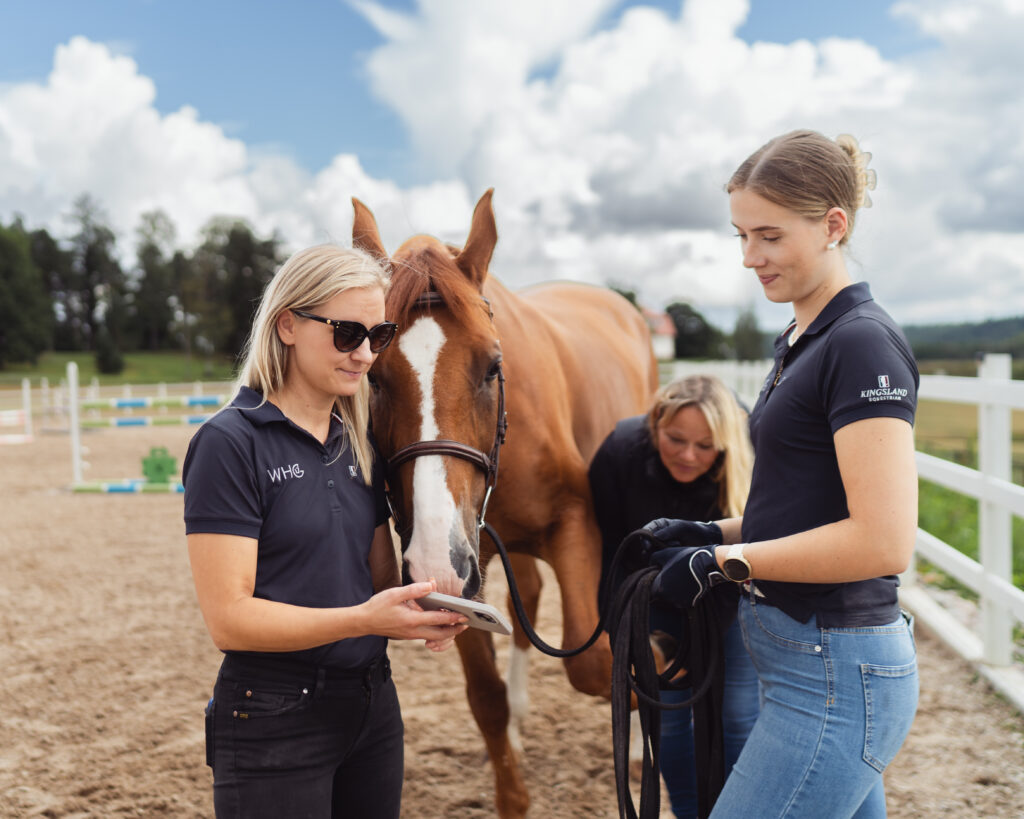
Clinical orthopedic examinations
During a clinical orthopedic examination, many different aspects of a horse are assessed. A veterinarian performs a detailed inspection of the horse’s muscular system and limbs manually. The movement of the horse is typically evaluated while the horse is in trot and, when necessary, also in gallop or while ridden. Regional anesthesia is a diagnostic aid used to localize problem areas as precisely as possible.
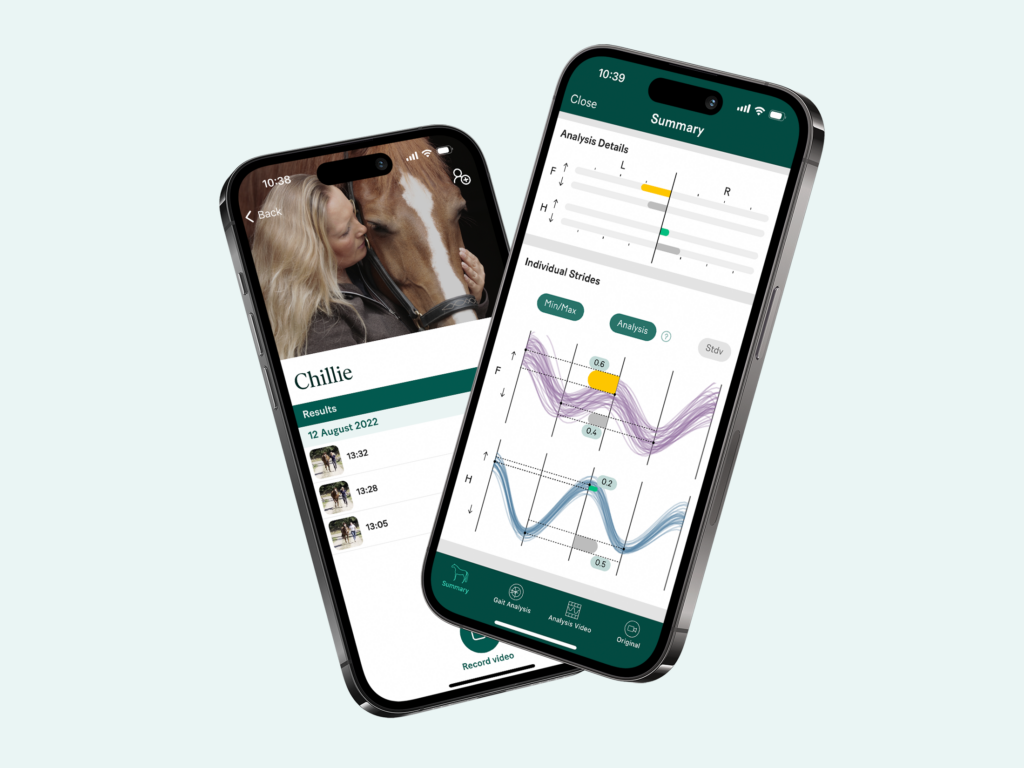
Sleip AI diagnosis
To guarantee the most reliable evaluation of a horse’s gait and response to diagnostic anesthesia as possible, we use Sleip. It is the first precise motion analysis tool that does not require any attachment of sensors. The technology developed by Sleip provides precise and accurate data of a horse’s gait to enhance a veterinarian’s consultation or diagnosis. Each time it is used, Sleip also saves and archives a 4K video recording, which can then be used to assess long-term changes in a horse’s gait accurately and conveniently.
Radiography and ultrasound
After the problem area has been localized, we use state-of-the-art radiography and ultrasonic equipment to establish as accurate a diagnosis as possible, even in stable conditions. This enables us to design an individualized and effective treatment plan so that your horse is able to get back to its normal routine as a sport horse or a leisure horse with minimal problems.Horse rehabilitation and medication
In addition to medicinal treatment, we always develop individualized rehabilitation programmes for each of our patients and monitor their rate of recovery carefully.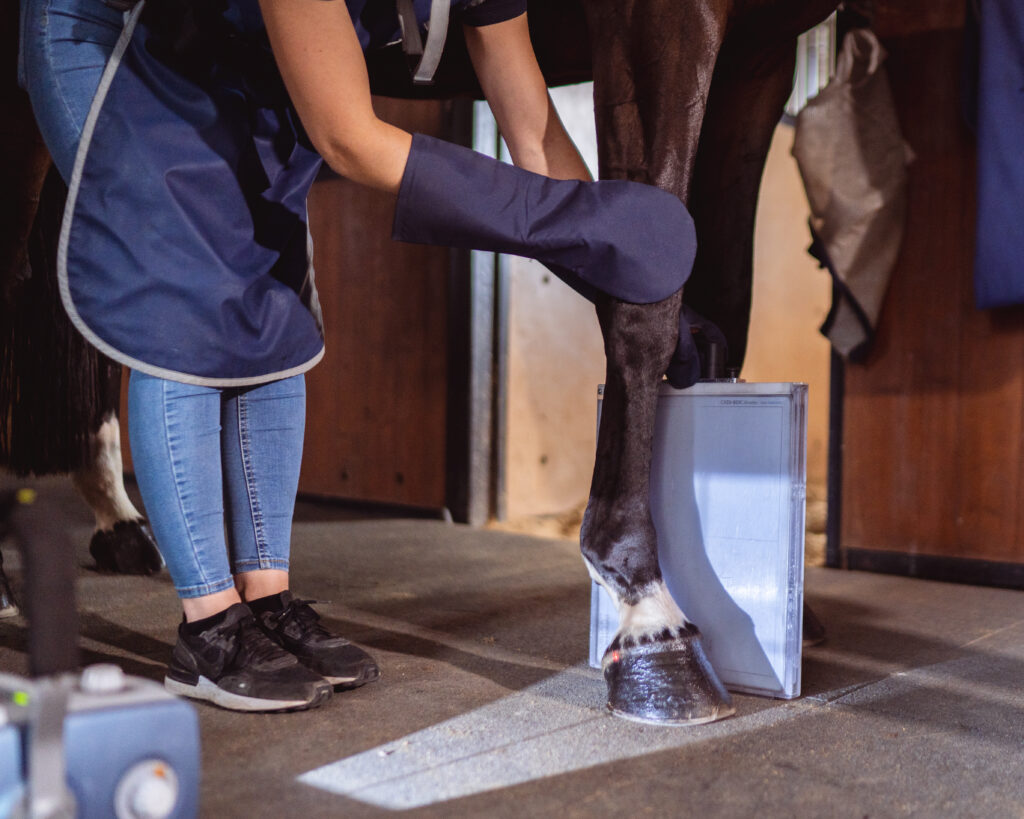
The methods of treatment available:
Joint injections
PRP
IRAP
Stem cells
Polyacrylamide hydrogel
ProStride APS
Shockwave
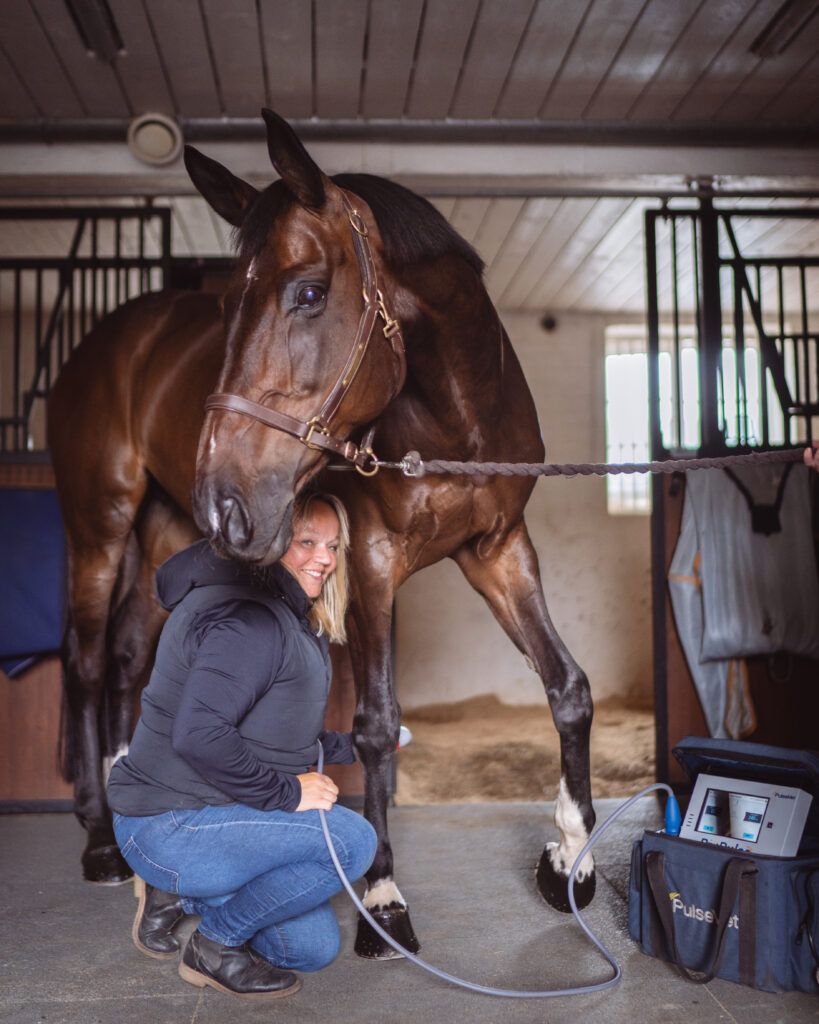
Platelet-Rich Plasma (PRP)
PRP is most commonly used to treat soft-tissue injuries, such as suspensory ligament and flexor tendon injuries. Once the damaged tissue is located via ultrasound, PRP is injected into it.
The primary treatment for a soft-tissue injury is rest, after which a tailored rehabilitation plan developed by a veterian is maintained. PRP injections are a good complement to rehabilitation, since the platelets in PRP contain a multitude of bioactive factors that speed up the healing process.
Although no large-scale clinical trials on the efficacy of PRP have been completed, the method is widely used in equine medicine and has caused adverse side-effects only in extremely rare cases.
In our treatements we use a Restigen PRP compound made out of your horses own blood. It can be manufactured at you home stable and injected immediately to the damaged area.
PRP treatment price €409,10.
Irap®
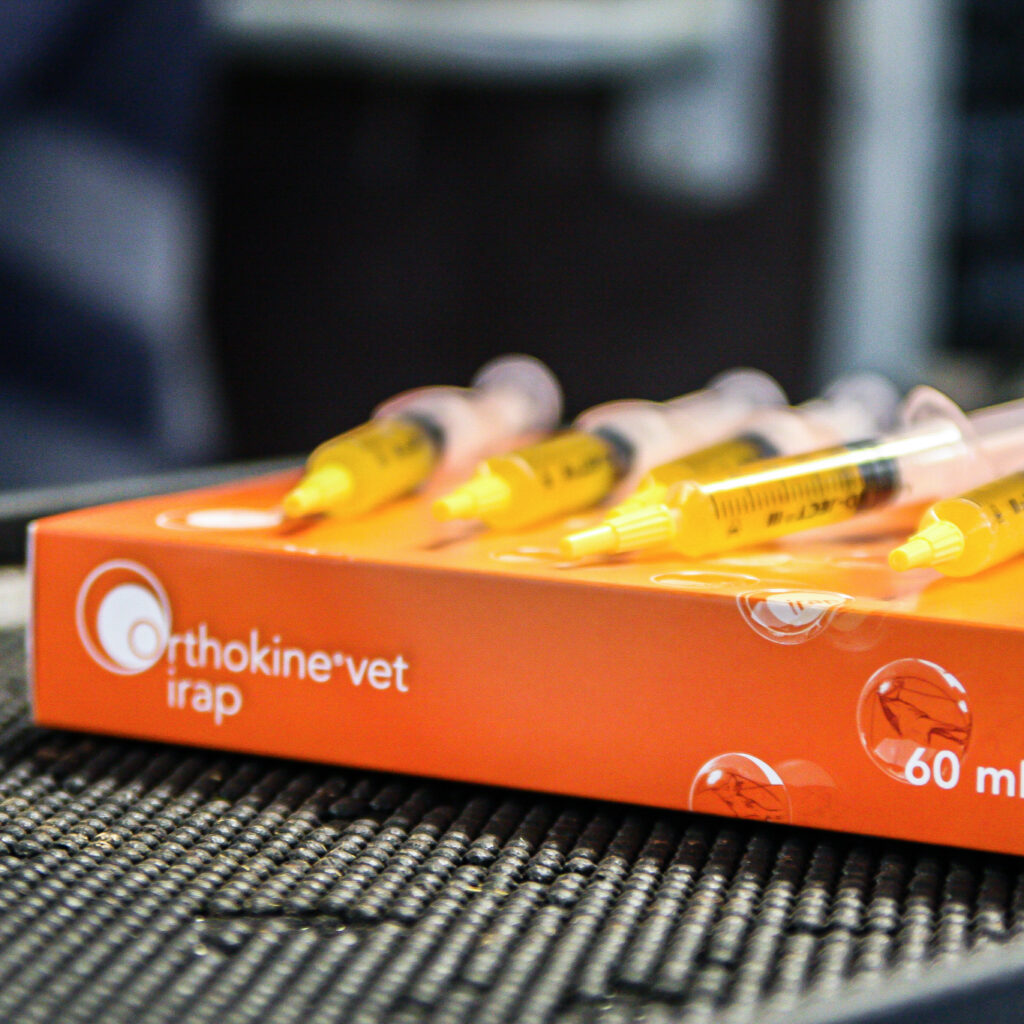
IRAP (Interleukin-1 Receptor Antagonist Protein therapy)
is a widely used joint disease treatment option. IRAP treatment alleviates the symptoms of joint inflammation caused by overtraining or mild trauma, as well as those of early stages of osteoarthritis. These symptoms include joint pain and inflammation.
For the treatment, 50 milliliters of blood is drawn from the patient (horse) into a special IRAP syringe. The blood is then incubated for 24 hours. This results in an autologous serum (ACS) that is rich in anti-inflammatory neurotransmitters with regenerative properties. One blood sample typically produces enough serum to carry out three to four treatments. For one course of treatment, the serum is administered once every three weeks and consists of three to four injections in total.
IRAP sample collection, processing and storage €534.
(Price does not include joint injection procedures, sedatives, house calls or mileage [travel])
Stem cells
Stem cells are used for treating either joint or soft-tissue injuries. Stem cells are injected into the damaged area where they grow into normal or near-normal tissue and improve the healing of the injured area.
In our treatments we use commercially manufactured allogeneic mesenchymal stem cells. Stem cells are basically able to specialize as any cell in the body. The stem cells used in the treatment of joint diseases are chondrogenically induced, which means that they differentiate (specialize) as chondrocytes. The stem cells used in the treatment of soft tissue injuries, on the other hand, are tenogenically induced, causing them to differentiate (specialize) as tendon tissue. All allogeneic stem cells we use have been taken from donor horses before being turned into a commercially manufactured compound in a laboratory. This guarantees that its stem cell count is known and the product is certifiably sterile and safe to administer.
Stem cell treatment is tailored and the compound ordered for each horse separately. The compound costs approximately €950.
Polyacrylamide hydrogel
Polyacrylamide hydrogel is used in the treatment of joint disorders in horses. It is a synthetic gel injection that mimics joint fluid and is injected directly into the joint. Once injected, it forms a stable, long-lasting layer that protects the joint by lubricating it, which reduces friction and protects the joint from strain. Polyacrylamide hydrogel is an especially good treatment option if changes caused by a degenerative joint disease have been detected. As it is slowly, mechanically broken down into smaller pieces, polyacrylamide hydrogel provides a longer acting, sustained effect than, for example, hyaluron, which is detectable inside the horse for only a short period of time. The hydrogel is able to reduce the pain and inflammation caused by a degenerative joint disease for longer than traditional treatments, which greatly reduces the need for frequent joint injections.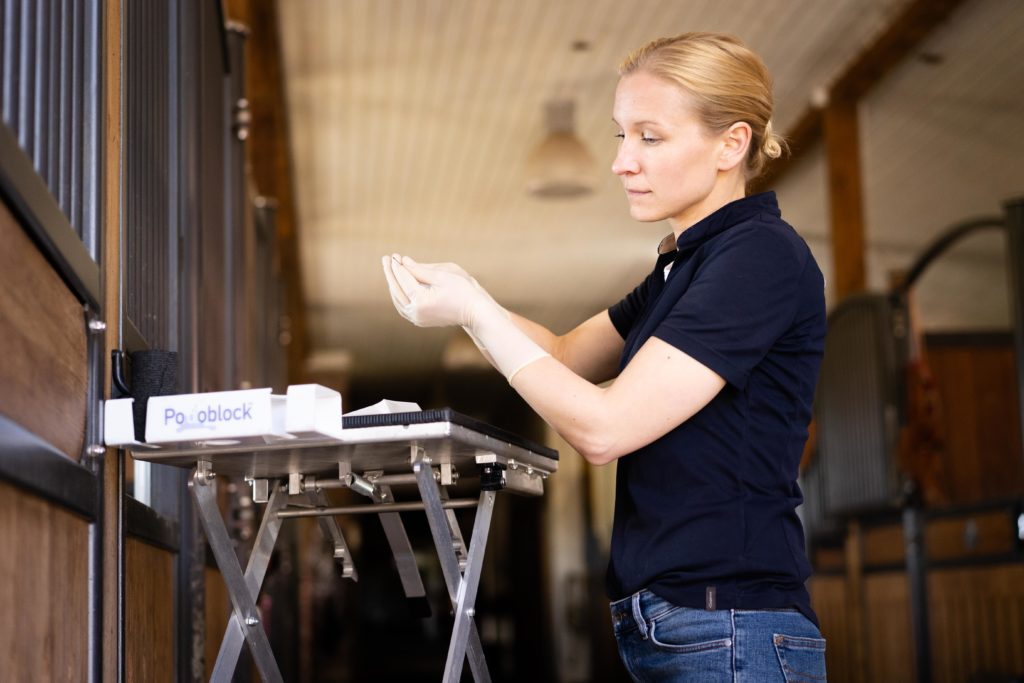
Horses have a high tolerance of polyacrylamide hydrogel, and no permanent or major detrimental side effects have been detected in research related to its use in horse treatments (McClure & Wang 2017, McClure, Yaeger & Wang 2017). The incorporation of polyacrylamide hydrogel into joints does take some time, so the treated horse should be restricted to a walking regimen for approximately three weeks after the injection. Normal training can be resumed after a month.
Polyacrylamide hydrogel Noltrex price starting from €233
(Price only includes the compound.)
ProStride APS
Pro-Stride APS (autologous protein solution) is a dual-device which offers an all-natural option for horses experiencing joint lameness. The output, ready to use within 30 minutes, consists of a concentrated solution of white blood cells, platelets, growth factors and anti-inflammatory cytokines (including IL-1ra among others).
The output of the Pro-Stride system consists of a concentrated solution of white blood cells, platelets, growth factors(IGFI, HGF, TGF-β, PDGF, FGF2, VEGF, EGF) and anti-inflammatory cytokines (IRAP/IL1ra, sIL1R, sTNFRI and II, IL-10). This combination of molecules not only neutralizes IL-1β and TNF-α, key cytokines for chronic inflammation, but also aid in the healing process of damaged tissues.
Price €530 (Price includes procedure and materials)
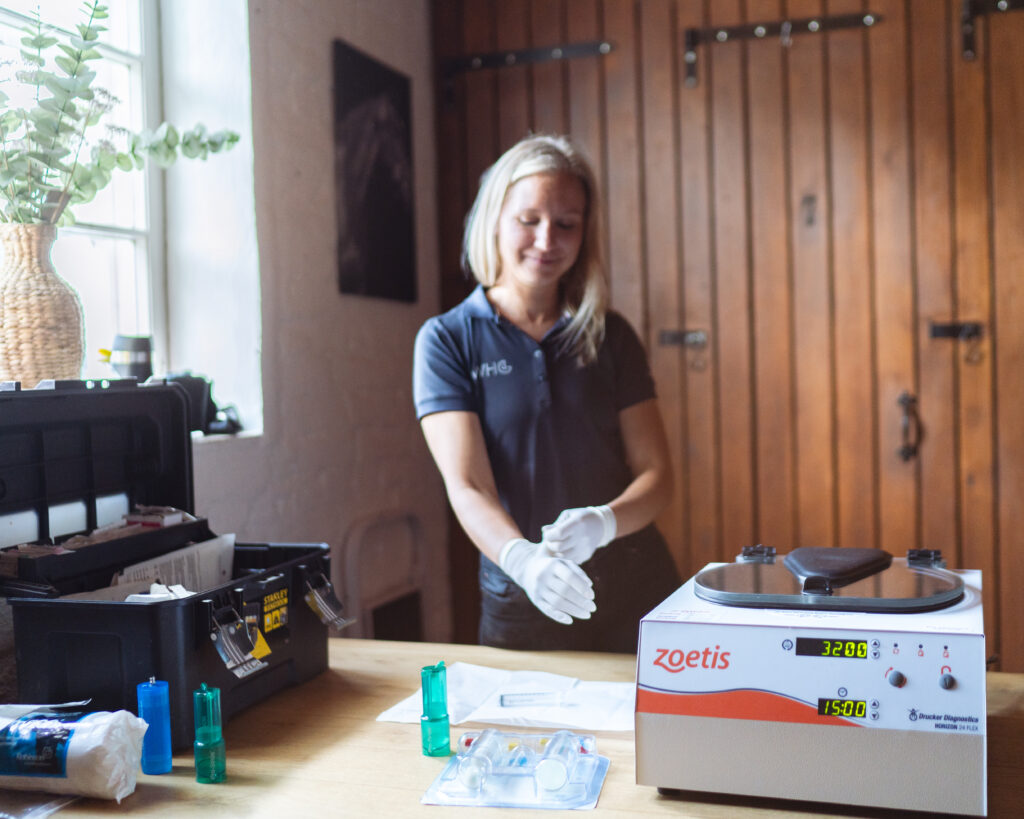
ProStride APS
Pro-Stride APS (autologous protein solution) is a dual-device which offers an all-natural option for horses experiencing joint lameness. The output, ready to use within 30 minutes, consists of a concentrated solution of white blood cells, platelets, growth factors and anti-inflammatory cytokines (including IL-1ra among others).
The output of the Pro-Stride system consists of a concentrated solution of white blood cells, platelets, growth factors(IGFI, HGF, TGF-β, PDGF, FGF2, VEGF, EGF) and anti-inflammatory cytokines (IRAP/IL1ra, sIL1R, sTNFRI and II, IL-10). This combination of molecules not only neutralizes IL-1β and TNF-α, key cytokines for chronic inflammation, but also aid in the healing process of damaged tissues.
Price 523,48 € (Price includes procedure and materials)
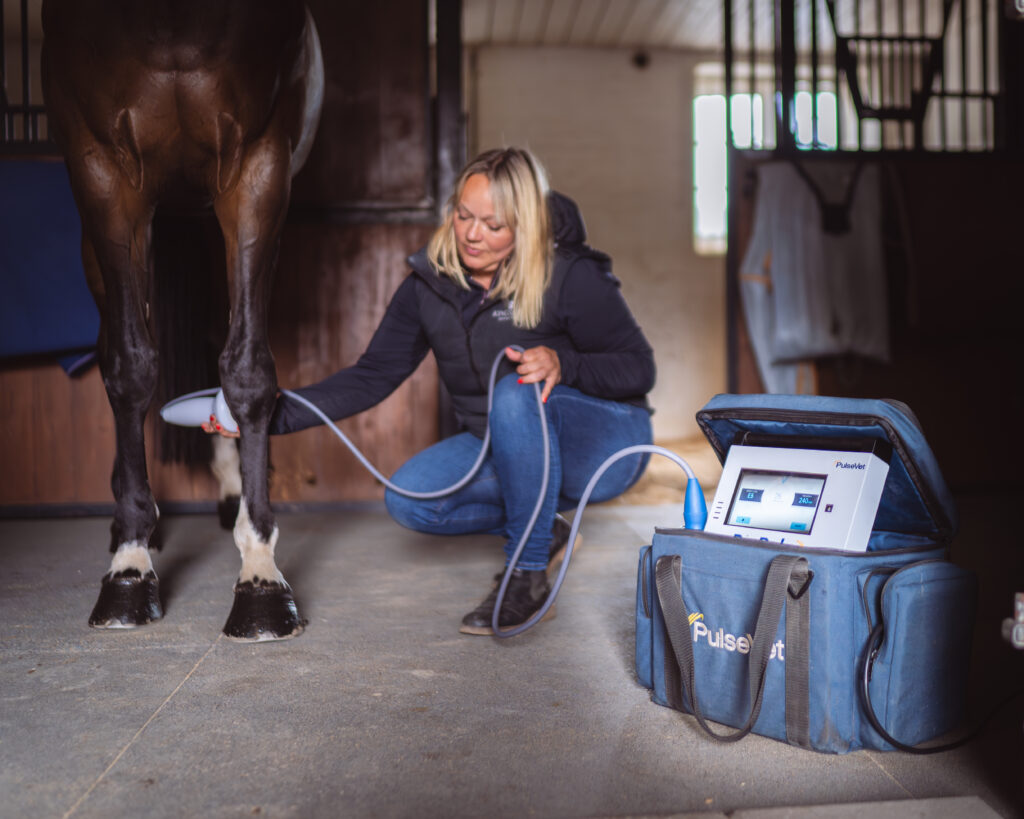
Shockwave
Extracorporeal shockwave therapy is an effective form of treatment that studies have shown to provide pain relief for and increase performance on horses. One of the advantages of treating horses using shockwave therapy is that it usually provides immediate pain relief, which makes it possible to evaluate its effects on equine performance instantly.
Shockwave therapy is an effective treatment for a variety of injuries and symptoms. It is used, for example, for
- soft tissue injuries, such as bowed tendons and suspensory ligament injuries
- splint bone fractures and bone spavin.
- vertebral spinal pain.
The necessity and usefulness of shockwave therapy is assessed on a patient-by-patient basis with a lameness evaluation performed by a veterinarian. Since injuries can be stimulated to heal faster using shockwave therapy, it is most effective when combined with more conservative methods of treatment. An experienced veterinarian will design a treatment plan that is best suited for your horse.
Shockwave therapy is typically administered in a series of sessions. Although even a single session provides instant pain relief for the horse, a longer lasting effect can only be achieved by administering the treatment in multiple sessions. Typically, the treatment is administered in three separate sessions, each three weeks apart.
The equipment used in shockwave therapy comes in a variety of models. The one used by WHG veterinarians is PulseVet Gold standard Shockwave, which is the best on the market. It generates electrohydraulic shockwaves and is the only piece of shockwave therapy equipment whose effectiveness has been proven in multiple scientific studies.
Shockwave: a series of three sessions €410
Shockwave: a single session €167